The Muscovy duck (Cairina moschata) is a species of duck endemic to the American tropics, from the Rio Grande Valley of Texas and Mexico south to Argentina and Uruguay. The Muscovy duck was first domesticated in Brazil, prior to European discovery in the late 1490s. It was bred primarily for meat and today it is often referred to as a Barbary duck in a culinary context. The Muscovy duck is the only domestic duck not derived from mallard stock, although domestic Muscovy ducks and mallards will sometimes crossbreed, resulting in the mulard. The domestic form is sometimes given subspecies status (C. m. domestica), but more commonly it is only considered a form or variety. The subspecies name was first coined by R. A. Donkin in 1989 in his book on the origin and dispersal of the domestic Muscovy duck, but because the name was not assigned per the rules set forth in the International Code of Zoological Nomenclature, the combination is considered invalid. Feral populations of domestic Muscovy duck occur in many parts of the world, most notably North America, Europe, eastern Australia, and New Zealand. When I lived in Atlanta, GA there were breeding populations of Muscovy duck in Piedmont Park, across the street from my apartment. In 2023 Papo produced the first figure of a Muscovy duck, and specifically indicated it was the domestic variety (as also supported by its inclusion in the Farm Life line).
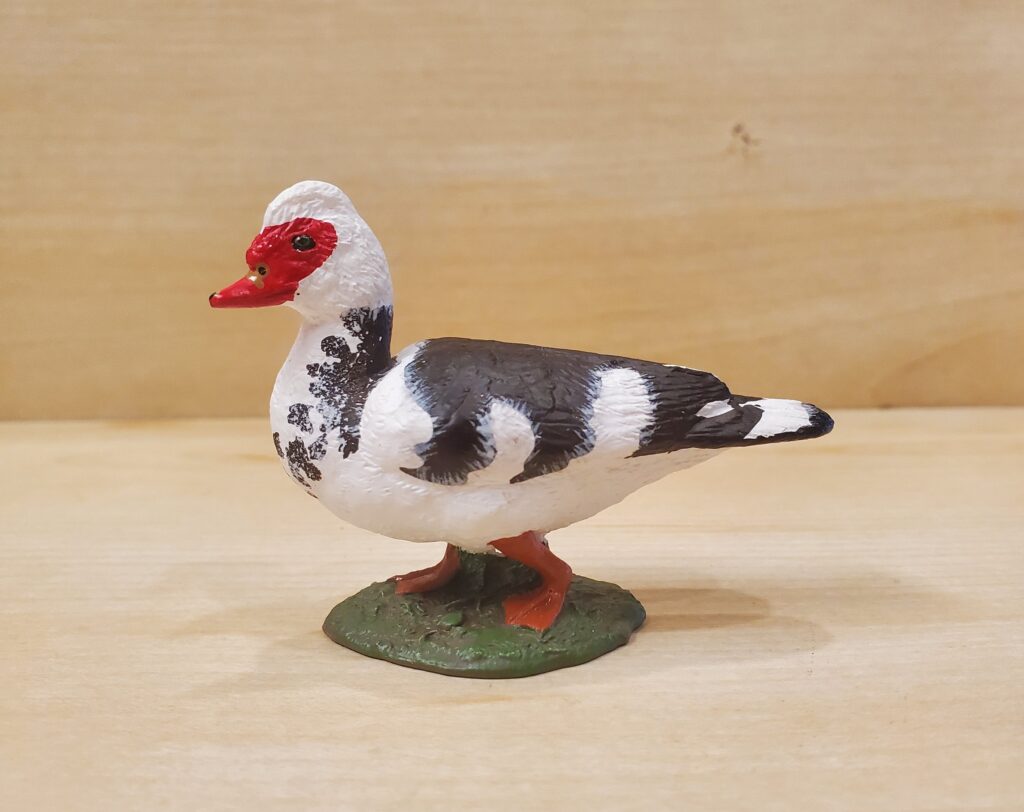
Wild type Muscovy duck are a graceful, svelte species, but domestic varieties are larger and chunkier. They are usually measured based on weight rather than height or length, but males can range anywhere from 66-86 cm in length. The posture of Papo’s duck makes calculating a scale challenging but measured along midline, the body length comes to approximately 9.5 cm for a scale of 1:7-1:9.
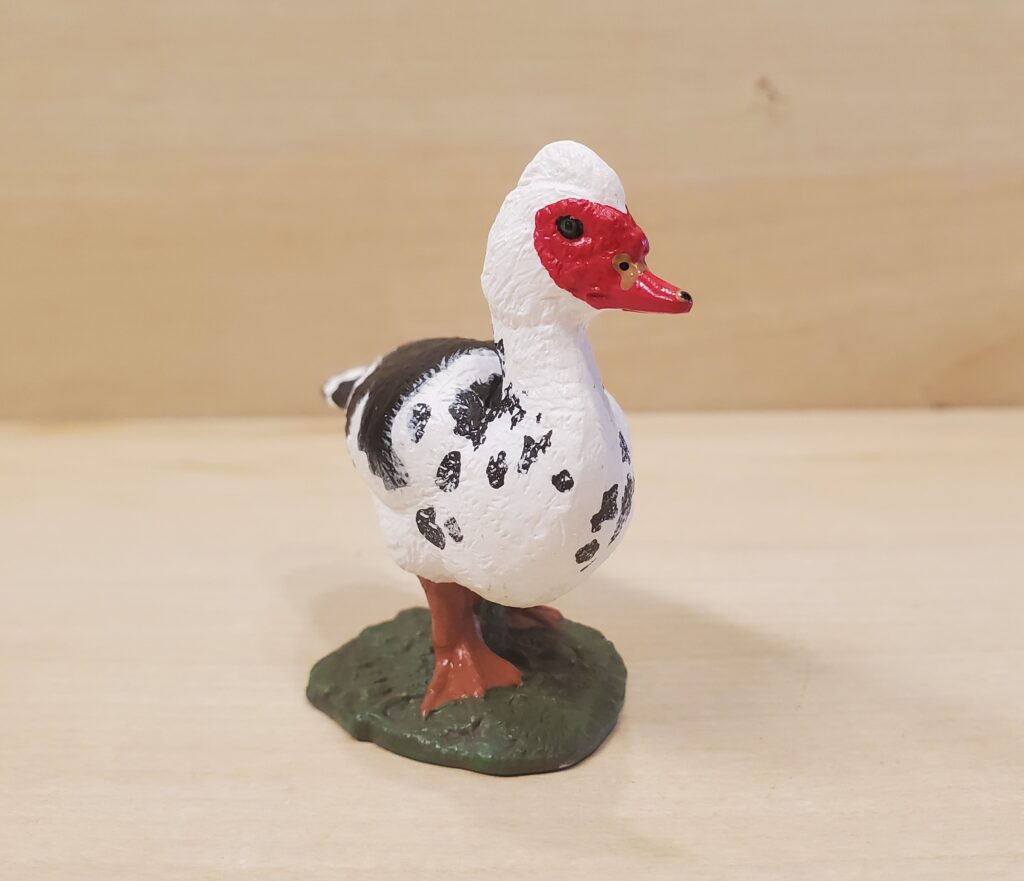
The sculpt is a classic male domestic Muscovy duck, as indicated by a fleshy caruncle above the base of the bill and an erect crest of feathers on the head. Light texturing gives the impression of feathers over much of the body. The bird is sculpted on a habitat-style base, with additional vegetation sculpted between the legs, probably to give the figure additional support over time.
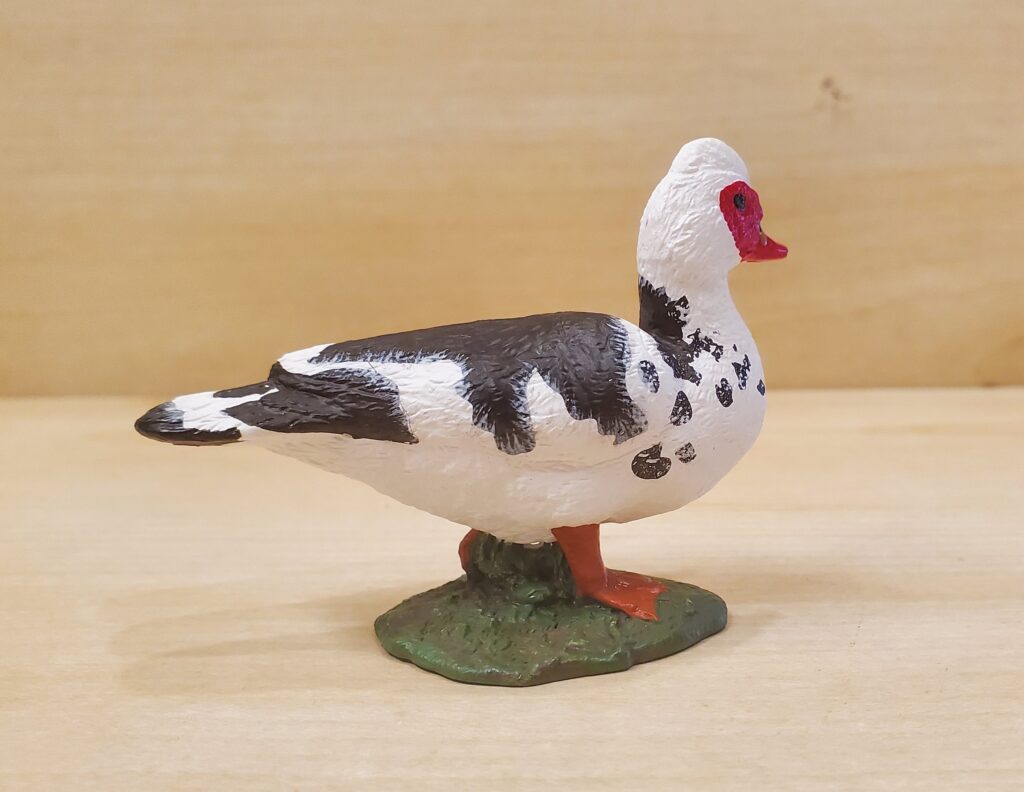
While wild Muscovy ducks are typically black with iridescent green and bronze wings with white wing patches, domestic Muscovy ducks come in a variety of both solid colors, including black, blue, chocolate, lavender, and white, and ‘magpie’ colors, in which the same solid colors are patterned with white. Magpie forms can can also be categorized as ‘standard’, when the head is the same color as what contrasts with the white, or ‘white-headed’, where the head is white. Papo’s figure is painted as a white-headed black magpie variety.
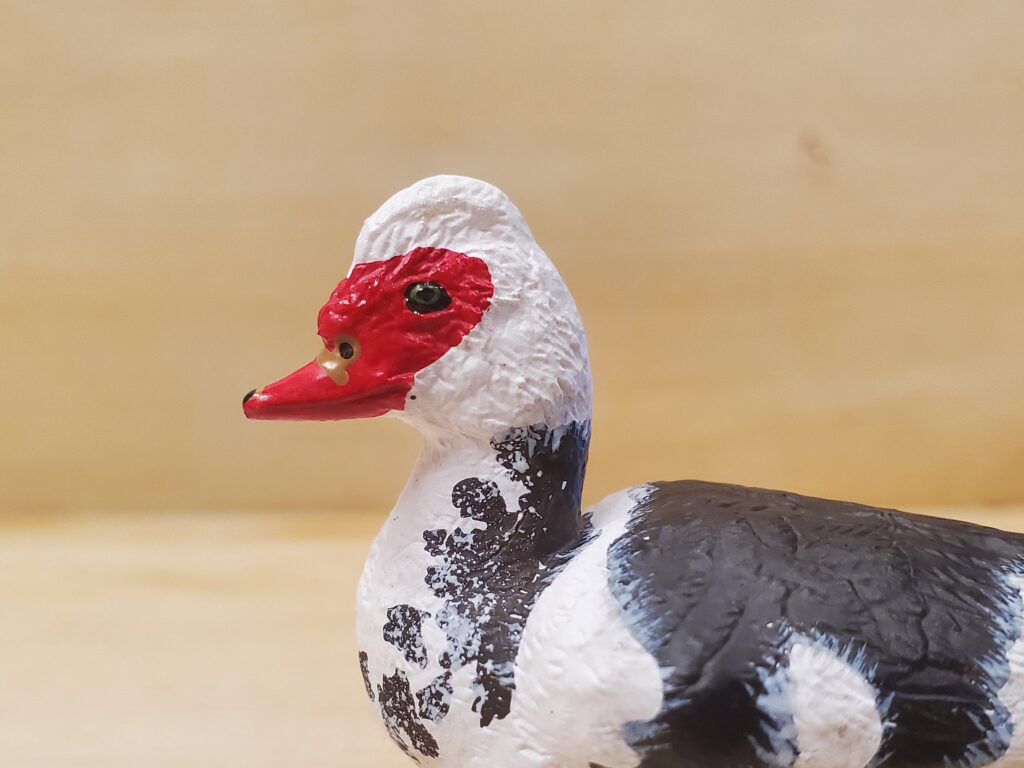
It is somewhat surprising it took so long to get a Muscovy duck as a toy or figure, and while I am sure most people would prefer the wild type, Papo did an admirable job in executing this domestic variety. It comes highly recommended to collectors of diverse taxa, domestic animals, and farm animals. Available wherever Papo toys are sold.
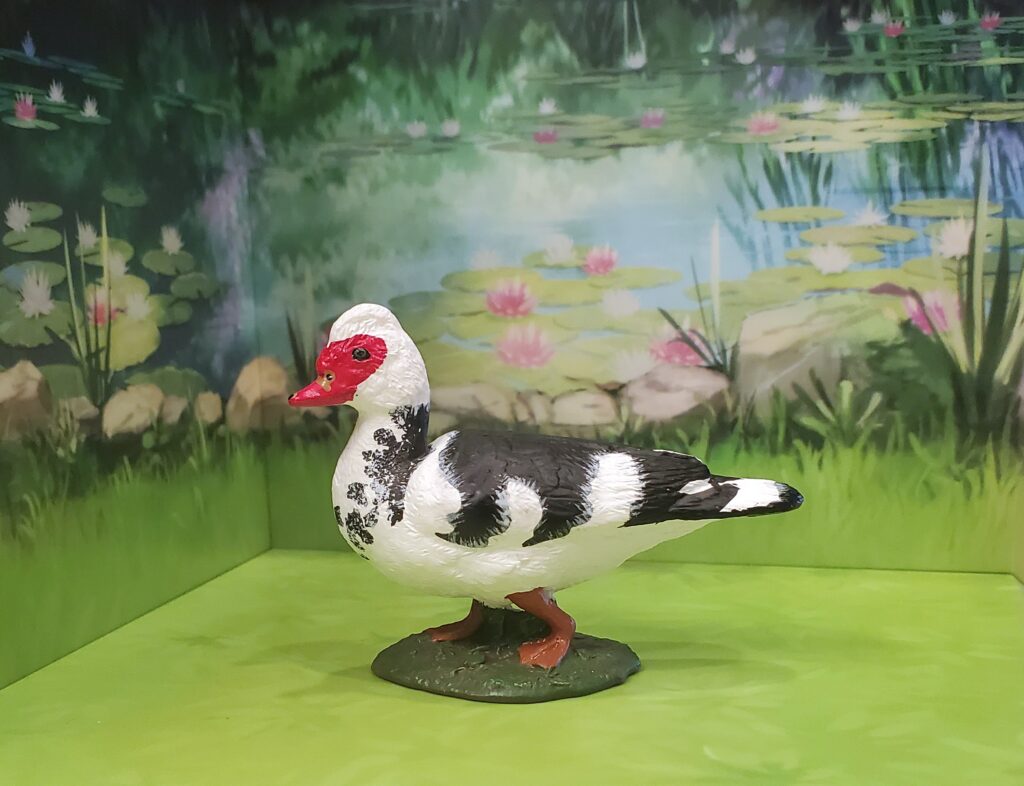
Disclaimer: links to Ebay and Amazon on the AnimalToyBlog are affiliate links, so we make a small commission if you use them. Thanks for supporting us!




@blog Quack!
Remote Reply
Original Comment URL
Your Profile
Quack quack!
@blog Bidirectional comment federation is working! Thanks @pfefferle !
Remote Reply
Original Comment URL
Your Profile
Quack quack quack
Fun fact: Muscovy ducks don’t quack, they hiss!
In my teenage years I had a male Muscovy that paired up with a magpie colored domestic mallard breed, the result was 11 hybrid ducks on the property. They were a ton of fun but had a serious case of wanderlust. They would adventure all over our 50 acres and beyond. On particularly cold winter nights I would have to go track them down and herd them back to the barn. They even got frozen to a pond once and I had to rescue them. Eventually a couple left to live at a beaver pond across the field and stayed they for many years, even after I moved out. They could fly but rarely did. Anyway, great review of a species I’m clearly fond of. A figure I’ll certainly have to get.
I fell in love with the Muscovy duck seeing them in aforementioned Piedmont Park in Atlanta. Since officially birding, I have also documented feral domestics in Arizona and Texas. I was ecstatic when Papo announced this figure!!!
I did not know that! Interesting. now I feel even sillier than when I was saying “quack quack” to myself.
@blog hiss!
Remote Reply
Original Comment URL
Your Profile
not every duck is what it’s quacked up to be!
To the best of my knowledge, female mallards are the only ducks that quack. But since most domestic ducks come from mallards they also quack which probably leads to the impression that all ducks quack.
Male mallards quack too. I’ve experienced them doing that in person.